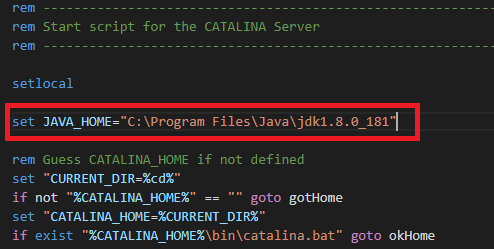

- Tomcat 10 java version how to#
- Tomcat 10 java version install#
- Tomcat 10 java version series#
- Tomcat 10 java version download#

If you want to access the Tomcat server remotely, it will be necessary to whitelist the remote IP address to which access will be allowed.
Tomcat 10 java version how to#
Here we will have how to use as username admin and as password the one we indicate in the file tomcat-users.xml. This should show us the default Tomcat page: Once in the program interface, you will have to click on the option Manager to login to the backend page. Sudo systemctl status rvice Start the Tomcat GUIĪt this point, it will only be necessary open our browser and go to the local server IP or host name. When we are back in the terminal, we are going to execute the following commands to reload systemd profiles and enable tomcat service:Īfter these commands, to check if tomcat is running or not, we will only need to execute: Then we will save the file.Įnvironment="JAVA_HOME=/usr/lib/jvm/default-java"Įnvironment="JAVA_OPTS=file:///dev/urandom"Įnvironment="CATALINA_BASE=/opt/tomcat/apache-tomcat-10.0.12"Įnvironment="CATALINA_HOME=/opt/tomcat/apache-tomcat-10.0.12"Įnvironment="CATALINA_PID=/opt/tomcat/apache-tomcat-10.0.12/temp/tomcat.pid"Įnvironment="CATALINA_OPTS=-Xms512M -Xmx1024M -server -XX:+UseParallelGC"ĮxecStart=/opt/tomcat/apache-tomcat-10.0.12/bin/startup.shĮxecStop=/opt/tomcat/apache-tomcat-10.0.12/bin/shutdown.sh When the editor opens, let's paste the following lines within. Next, we will execute the following command to create a server account for Tomcat: sudo vim /etc/systemd/system/rvice We can do this by copying and pasting the following lines in the file, just before:įrom change the option "password" for our password, we save and close the editor. Inside the file we are going to create an account with password for the user admin and save it inside the file. Now that we have the extracted package in the location we want, we are going to execute the following command to open tomcat configuration file for default user: sudo vim /opt/tomcat/apache-tomcat-10.0.12/conf/tomcat-users.xml Sudo chown -R tomcat: /opt/tomcat sudo sh -c 'chmod +x /opt/tomcat/apache-tomcat-10.0.12/bin/*.sh' Configure the Tomcat service Now we are going to give the Tomcat user control of the entire directory, and we will make all the scripts in the bin location executable:

Sudo mkdir /opt/tomcat sudo tar xzvf apache-tomcat-10*tar.gz -C /opt/tomcat/

To do this we will only have to execute the commands: That is where we are going to unzip the downloaded file.
Tomcat 10 java version download#
When the download is finished, we will create tomcat home folder in / opt / tomcat. In addition to using the web browser, we can also get this latest package published today by opening a terminal (Ctrl + Alt + T) and executing the commands in it:
Tomcat 10 java version series#
At the time of this writing, the latest released version of the 10 series is 10.0.12, and can be downloaded from the project website. Sudo useradd -s /bin/false -g tomcat -d /opt/tomcat tomcat Download TomcatĪt this point, we are ready to download and configure Tomcat. To do all this, in the same terminal we will only have to execute: In addition we will also do / opt / tomcat the home folder for the user we are going to create. Then we will make it a member of the tomcat group that we created earlier. Then it's time to create a new user for Tomcat which we are going to call tomcat. We will do this with the command: sudo groupadd tomcat Java -version Create a user and group for Tomcatįirst we are going to create a new group for Tomcat which we are going to call tomcat. Once installed, we will only need verify installation checking java version:
Tomcat 10 java version install#
Sudo apt update sudo apt install default-jdk To withdraw from your install the OpenJDK that we can find in the Ubuntu repositories, we just have to open a terminal (Ctrl + Alt + T) and execute: For this we can both install Oracle Java JDK as its open source alternative OpenJDK. How to install Tomcat 10 on Ubuntu 20.04 Install OpenJDK on UbuntuĪs I said lines above, Tomcat requires that Java JDK be installed on our system. 1 How to install Tomcat 10 on Ubuntu 20.04.


 0 kommentar(er)
0 kommentar(er)
